#Heritage Tourism
Text

Interiors of Amer Fort in Jaipur, India depicting murals with a flowering plant motif.
#ots#amer fort#jaipur#rajasthan#india#indian architecture#mughal architecture#desi tag#desi tumblr#desiblr#heritage tourism
8K notes
·
View notes
Text
92 notes
·
View notes
Text

Metcalfe Market, Annotto Bay, St. Mary, Jamaica
Mark Phinn Photography
#Metcalfe Market#jamaica#jamaica attractions#architecture#photography#heritage tourism#markphinnphotography#photographydiary#visitjamaica#St. Mary
5 notes
·
View notes
Text

@eleanorbrooke
See more like this.
#train#trains#heritage#historic#heritage tourism#travel#wanderlust#train carriage#carriage#cafe#restaurant
20 notes
·
View notes
Text
Mid-Atlantic Majesty
This has happened to me before: I have this notion of Boston/Salem pre-eminence in all material Federal, and then I see something from Philadelphia or Baltimore, or on my most recent trip New Castle, Delaware. I visited three museums on my recent spring break trips to the Delaware River Valley: at the Court House Museum in New Castle I learned all about Delaware’s nearly simultaneous separation…
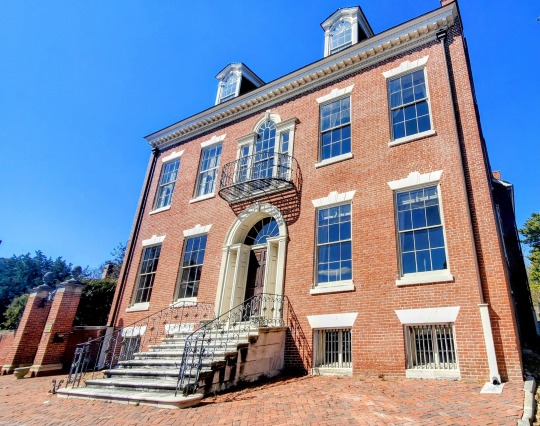
View On WordPress
#Colonial Revival#Delaware#Federal Architecture#great houses#Heritage Tourism#Historic Interiors#Museum Houses#road trips
8 notes
·
View notes
Text
Petra, Jordan
#Petra#Petra Jordan#Jordan#7wondersoftheworld#seven wonders of the world#world wonders#ancient#ancient city#Moses#historical tourism#heritage tourism#geotourism#nabateans#archaeological site#worldfacts#travelfacts#travel#tourism
7 notes
·
View notes
Text
Historical and Cultural Experiences Uttar Pradesh
Explore the vibrant tapestry of Uttar Pradesh with European Konnect's India Tour Packages. Immerse yourself in the cultural mosaic of this northern Indian state, home to the iconic Taj Mahal, spiritual Varanasi, and historical Lucknow. Our meticulously crafted Uttar Pradesh Tour Packages promise an unforgettable journey through architectural marvels, sacred rivers, and rich heritage, ensuring an immersive experience in the heart of India's cultural and historical legacy.
0 notes
Text
St Michael, Barbados. Heritage Tourism. Selling Ilaro Court into this boutique-type concept makes sense.
https://youtu.be/YsVEx2KU9TQ
Think big! It should be sold into a lucrative-type of tourism slavery. Invite cruise ship passengers. Have nightly shows. Five-star restaurant. A jewelry store. A small movie theatre for ‘special guests only’. The works! Have your say. Naked!!
Like. Share. Subscribe. Comment on YouTube.
youtube
0 notes
Text
Exploring The Roots: An African Heritage Tour In Bermuda With Taxi Service
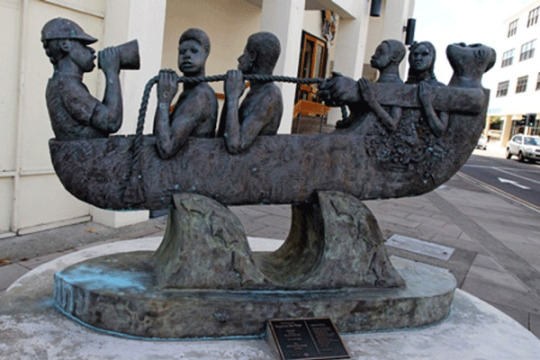
With its turquoise waters and picturesque landscapes, Bermuda is undoubtedly a paradise for vacationers. But beyond the sun and sand, this enchanting island has a captivating history deeply rooted in African heritage. Let's embark on a journey through time and culture as we explore the African heritage tour in Bermuda through a guided tour, and all made more accessible and comfortable with taxi services. Get ready for an enriching experience that will open your eyes and your heart to this island's rich history. Read more :- https://www.zupyak.com/p/3825798/t/exploring-the-roots-an-african-heritage-tour-in-bermuda-with-taxi-service
0 notes
Text
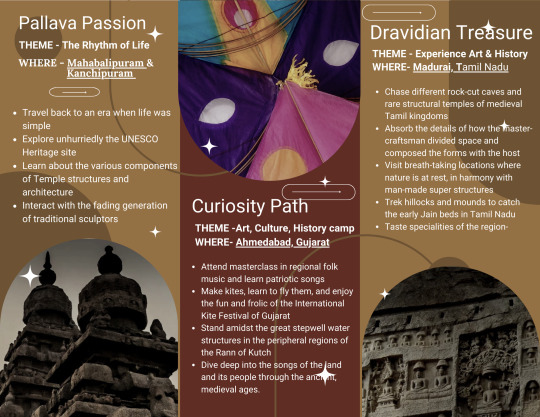
Pallava Passion a 5 days #travel for The Rhythm of Life to #Kanchipuram and #Mahabalipuram https://jvala.travel/paths-of-jvala/pallava-passion/
The Curiosity Path a 7 days #travel for Art, Culture, History camp to #Ahmedabad, #Gujarat. A retreat for young aspiring students interested in Indian history, mythology and stories https://jvala.travel/paths-of-jvala/curiosity-path/
Dravidian Treasure a 10 days #travel for To experience Art and History to #Madurai, #TamilNadu https://jvala.travel/paths-of-jvala/dravidian-treasure-trail/
#experience travel#heritagesite#heritage tourism#Temple art#Architecture#culture#historical sites#History camp#immersive#Tour package
1 note
·
View note
Text
Telephone Exchange at Fort Edmonton.

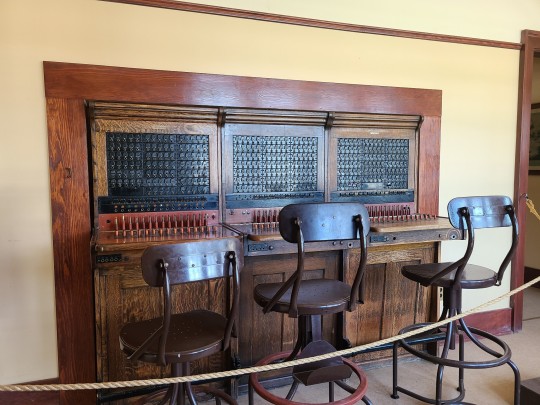


0 notes
Text

St. Mark — Mandeville Parish Church, Mandeville, Jamaica
Mark Phinn Photography
#Religious Architecture#jamaica attractions#architecture#photography#heritage tourism#photographydiary#visitjamaica#markphinnphotography#church#jamaica#Mandeville Parish Church#St. Mark's Anglican Church
4 notes
·
View notes
Text
since theres a lot of discussions about shipwrecks and deep sea submersibles happening right now, im just gonna quickly recommend this video which details how caladan oceanic found the samuel b roberts.
the samuel b roberts was a destroyer escort sank during the battle off samar during ww2. the wreck was found last year and is 22,621 feet/6885 metres deep which is almost 10,000 feet or 3000 metres deeper than the titanic and is currently the deepest wreck ever found.
in the video, you see a deep sea submersible (which can go down to 36,000 feet/10,973 metres) that isnt a tin can finished up with duct tape, super glue and glittery gel pens. it is piloted by an expert and they swap out pilots every day to avoid exertion or fatigue, and they have a very complex sonar system for finding wrecks. the longest they can go down is 16 hours and they keep in contact with their ship above and have to get clearance just for half an hour more.
when they find the wreck, they look around it to ensure they can identify it and map it out as well as they can, and then head back up to shore. they then hold a funeral service for those who died and leave a wreath on the ocean surface above where the wreck lays.
while im somewhat sketched out by the founder victor vescovo, the company does important work in terms of furthering our understanding of the ocean and finding wrecks which are the gravesites of those who passed. and they are not disrespectful to those whose graves lay 22,000 feet/6700 metres down on the seabed.
and what i would like to point out is how the samuel b roberts is protected against unauthorised disturbance by the sunken military craft act. you would need a permit from the naval history and heritage command (and a submarine that can withstand all the pressure) to go see it.
which, as ive said many times in the last two days, is something that the titanic should also have protection against. there should be laws in place that do not allow people to treat a mass fucking gravesite as a tourist spot.
#kai rambles#titanic#titanic wreck#titan#titan sub#caladan oceanic#oceangate#oceangate expeditions#victor vescovo#stockton rush#tourism#samuel b roberts#dark tourism#capitalist bullshit#capitalism#mass graves#tw mass graves#sunken military craft act#naval history and heritage command#sammy b#hamish harding#battle of leyte gulf#id 100% recommend watching the video#its a fascinating watch and it is so refreshing to see them actually respect those who perished with the ship#shipposting
928 notes
·
View notes
Text
Meeting Houses of Rockingham County
(Sorry—I have been reading and writing about meeeting houses for the past few months but still do not know if their identifier is one word or two). On this past Sunday, a rather dreary day, the New Hampshire Preservation Alliance sponsored a driving tour of meeting houses in western Rockingham County, encompassing structures in Hampstead, Danville, Fremont, and Sandown. I drove over from York…
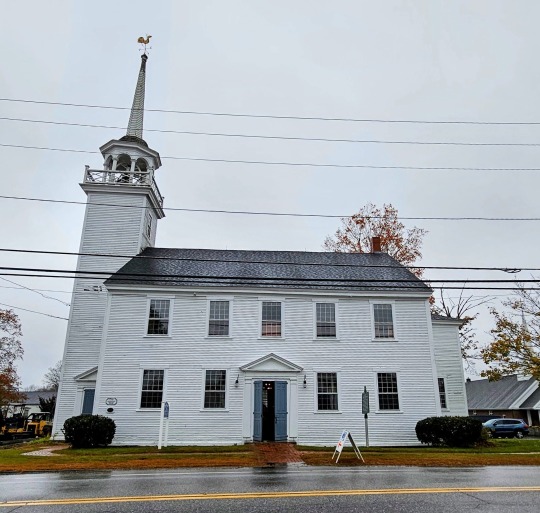
View On WordPress
#Architecture#Colonial Architecture#Colonial Craftsmanship#Heritage Tourism#Historic Interiors#Historic Preservation#Meeting Houses#New Hampshire#October
2 notes
·
View notes
Text
Nazca Lines, Peru
#travel#travelfacts#tourism#worldfacts#geotourism#historical tourism#naturaltourism#heritage tourism#world facts#worldtraveler#nazca lines#nazca#perutravel#Peru#geoglyphs#etchings#animals#plants#geometric shapes#sacred paths#Nazca culture#paracas culture#unesco#historic sites
2 notes
·
View notes
Text
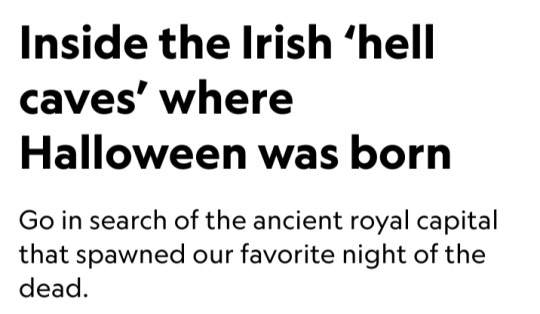

Story and photographs by Ronan O’Connell
September 26, 2023
In the middle of a field in a lesser known part of Ireland is a large mound where sheep wander and graze freely.
Had they been in that same location centuries ago, these animals might have been stiff with terror, held aloft by chanting, costumed celebrants while being sacrificed to demonic spirits that were said to inhabit nearby Oweynagat cave.
This monumental mound lay at the heart of Rathcroghan, the hub of the ancient Irish kingdom of Connaught.
The former Iron Age center is now largely buried beneath the farmland of County Roscommon.
In 2021, Ireland applied for UNESCO World Heritage status for Rathcroghan (Rath-craw-hin). It remains on the organization's tentative list.

Rooted in lore
Spread across more than two square miles of rich agricultural land, Rathcroghan encompasses 240 archaeological sites, dating back 5,500 years.
They include burial mounds, ring forts (settlement sites), standing stones, linear earthworks, an Iron Age ritual sanctuary — and Oweynagat, the so-called gate to hell.
More than 2,000 years ago, when Ireland’s communities seem to have worshipped nature and the land itself, it was here at Rathcroghan that the Irish New Year festival of Samhain (SOW-in) was born, says archaeologist and Rathcroghan expert Daniel Curley.
In the 1800s, the Samhain tradition was brought by Irish immigrants to the United States, where it morphed into the sugar overload that is American Halloween.
Dorothy Ann Bray, a retired associate professor at McGill University and an expert in Irish folklore, explains that pre-Christian Irish divided each year into summer and winter.
Within that framework were four festivities.
Imbolc, on February 1, was a festival that coincided with lambing season.
Bealtaine, on May 1, marked the end of winter and involved customs like washing one’s face in dew, plucking the first blooming flowers, and dancing around a decorated tree.
August 1 heralded Lughnasadh, a harvest festival dedicated to the god Lugh and presided over by Irish kings.
Then on October 31 came Samhain, when one pastoral year ended and another began.
Rathcroghan was not a town, as Connaught had no proper urban centers and consisted of scattered rural properties.
Instead, it was a royal settlement and a key venue for these festivals.
During Samhain, in particular, Rathcroghan was a hive of activity focused on its elevated temple, which was surrounded by burial grounds for the Connachta elite.
Those same privileged people may have lived at Rathcroghan. The remaining lower-class Connachta communities resided in dispersed farms and descended on the site only for festivals.
At those lively events they traded, feasted, exchanged gifts, played games, arranged marriages, and announced declarations of war or peace.
Festivalgoers also may have made ritual offerings, possibly directed to the spirits of Ireland’s otherworld.
That murky, subterranean dimension, also known as Tír na nÓg (Teer-na-nohg), was inhabited by Ireland’s immortals, as well as a myriad of beasts, demons, and monsters.
During Samhain, some of these creatures escaped via Oweynagat cave (pronounced “Oen-na-gat” and meaning “cave of the cats”).
“Samhain was when the invisible wall between the living world and the otherworld disappeared,” says Mike McCarthy, a Rathcroghan tour guide and researcher who has co-authored several publications on the site.
“A whole host of fearsome otherworldly beasts emerged to ravage the surrounding landscape and make it ready for winter.”
Thankful for the agricultural efforts of these spirits but wary of falling victim to their fury, the people protected themselves from physical harm by lighting ritual fires on hilltops and in fields.
They disguised themselves as fellow ghouls, McCarthy says, so as not to be dragged into the otherworld via the cave.
Despite these engaging legends — and the extensive archaeological site in which they dwell — one easily could drive past Rathcroghan and spot nothing but paddocks.
Inhabited for more than 10,000 years, Ireland is so dense with historical remains that many are either largely or entirely unnoticed.
Some are hidden beneath the ground, having been abandoned centuries ago and then slowly consumed by nature.
That includes Rathcroghan, which some experts say may be Europe’s largest unexcavated royal complex.
Not only has it never been dug up, but it also predates Ireland’s written history.
That means scientists must piece together its tale using non-invasive technology and artifacts found in its vicinity.
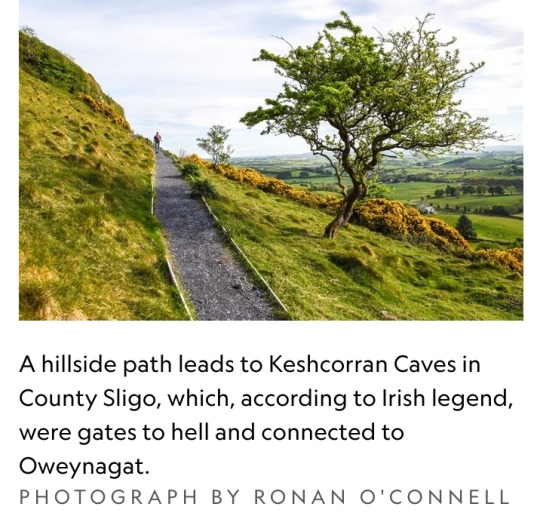
While Irish people for centuries knew this site was home to Rathcroghan, it wasn’t until the 1990s that a team of Irish researchers used remote sensing technology to reveal its archaeological secrets beneath the ground.
“The beauty of the approach to date at Rathcroghan is that so much has been uncovered without the destruction that comes with excavating upstanding earthwork monuments,” Curley says.
“[Now] targeted excavation can be engaged with, which will answer our research questions while limiting the damage inherent with excavation.”
Becoming a UNESCO site
This policy of preserving Rathcroghan’s integrity and authenticity extends to tourism.
Despite its significance, Rathcroghan is one of Ireland’s less frequented attractions, drawing some 22,000 visitors a year compared with more than a million at the Cliffs of Moher.
That may not be the case had it long ago been heavily marketed as the “Birthplace of Halloween,” Curley says.
But there is no Halloween signage at Rathcroghan or in Tulsk, the nearest town.
Rathcroghan’s renown should soar, however, if Ireland is successful in its push to make it a UNESCO World Heritage site.
The Irish Government has included Rathcroghan as part of the “Royal Sites of Ireland,” which is on its newest list of locations to be considered for prized World Heritage status.
The global exposure potentially offered by UNESCO branding would likely attract many more visitors to Rathcroghan.
But it seems unlikely this historic jewel will be re-packaged as a kitschy Halloween tourist attraction.
“If Rathcroghan got a UNESCO listing and that attracted more attention here that would be great, because it might result in more funding to look after the site,” Curley says.
“But we want sustainable tourism, not a rush of gimmicky Halloween tourism.”
Those travelers who do seek out Rathcroghan might have trouble finding Oweynagat cave.
Oweynagat is elusive — despite being the birthplace of Medb, perhaps the most famous queen in Irish history, 2,000 years ago.
Barely signposted, it’s hidden beneath trees in a paddock at the end of a one-way, dead-end farm track, about a thousand yards south of the much more accessible temple mound.
Visitors are free to hop a fence, walk through a field, and peer into the narrow passage of Oweynagat.
In Ireland’s Iron Age, such behavior would have been enormously risky during Samhain, when even wearing a ghastly disguise might not have spared the wrath of a malevolent creature.
Two millennia later, most costumed trick-or-treaters on Halloween won’t realize they’re mimicking a prehistoric tradition — one with much higher stakes than the pursuit of candy.
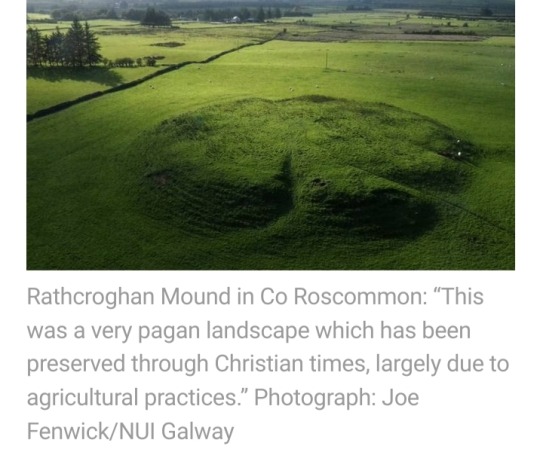
#Rathcroghan#Connaught#County Roscommon#UNESCO World Heritage#Samhain#Imbolc#Bealtaine#Lughnasadh#Tír na nÓg#Oweynagat cave#Ireland#remote sensing technology#Birthplace of Halloween#Halloween#Royal Sites of Ireland#Halloween tourism#Medb#Oweynagat#Iron Age#Irish history#archaeological site
84 notes
·
View notes